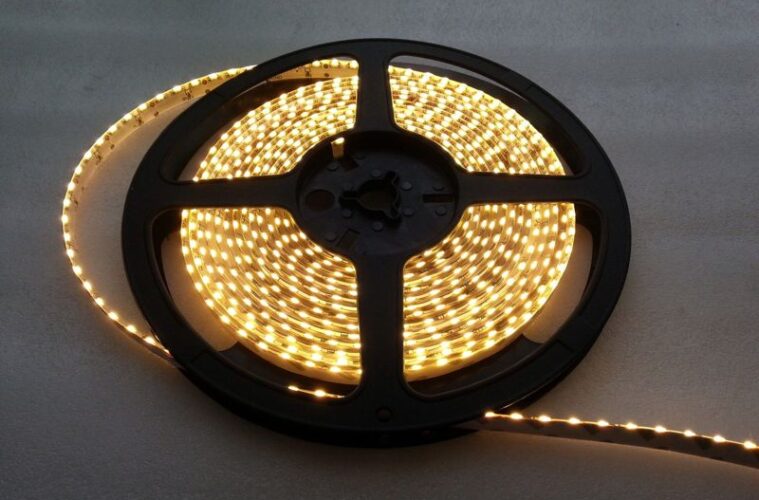All you need to know about LED lights
This article is a compendium of knowledge about LED lights. You will find useful information about interesting facts about LED lights below. We have described what the features of LEDs are. We have also mentioned the most important advantages and disadvantages of such lights. Read this text and learn something new today!
What are LED lights?
An LED is an abbreviation of “Light Emitting Diodes”. An LED is a two-lead semiconductor light source. LED bulbs produce those light emitting diodes to produce light. According to the Cambridge Dictionary, an LED is a device producing light especially on electronic equipment.
LEDs emit light when activated. Electrons can recombine with electron holes within the device. They release energy in the form of photons. LEDs differ from traditional lights primarily because they do not contain filaments that burn out. They produce light up to ninety percent more efficiently than incandescent lights.
How exactly do LEDs work?
Electroluminescence is nothing but the emission of light which is caused by the interaction of an electric field with a solid. LEDs work on the electroluminescence principle – as the result of recombination of holes and electrons in a semiconductor. A current is passing through the diode, majority charge carriers and minority charge carriers recombine at the junction.
What is the essence of LED lighting?
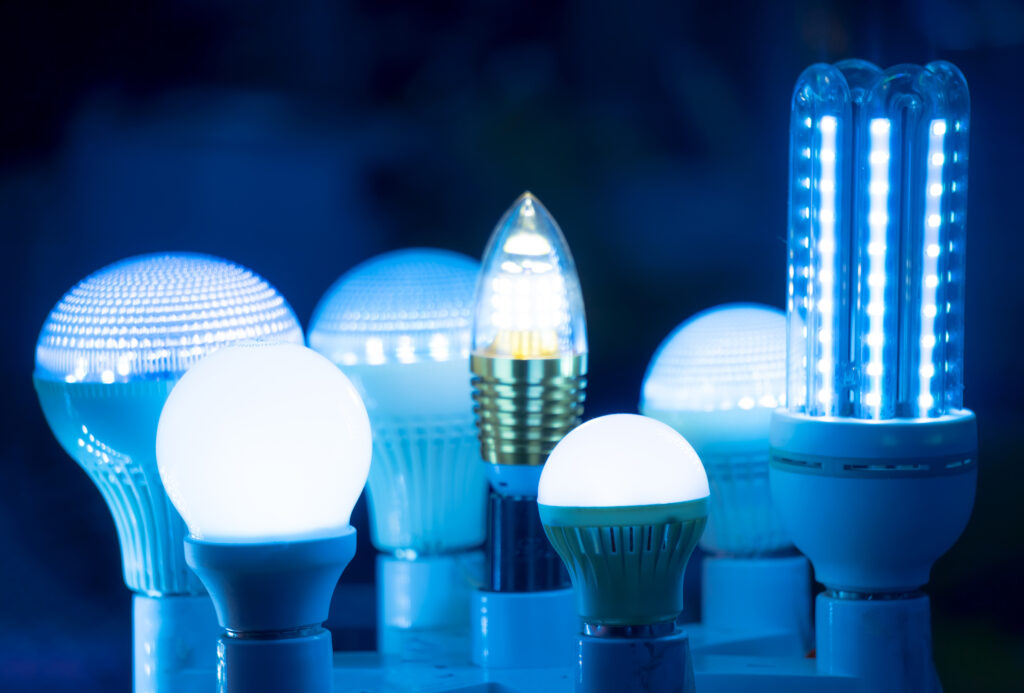
source: pinterest.com
Let’s explore the story behind LED lights. The way in which people used lights has changed over the years. In the past, people used candles and gas lamps. It took a long time before there were highly-developed lighting solutions such as LED lights. LED lighting took over the market.
Thanks to technological advancements, we can now enjoy energy-efficient and environmentally-friendly fixtures which can light up both indoors and outdoors without consuming plenty of electricity. It can be concluded that LED technology is one of the greatest innovations.
LED lights are the superstars of the fast evolving lighting industry, there is no question about that. LEDs produce much better light output than other lighting fixtures. Nowadays, LED light bulbs enjoy great popularity among consumers, but it’s not surprising since they bring many benefits to their users. We can write and talk about LED lights for hours. After all, this is a fascinating and popular topic and some aspects need to be clarified.
What are different types of LED lights?
There are lots of different types of LED lights. Describing all of them could take forever. That’s why we have decided to only familiarise you with LED strip lights, LED panel lights, and LED bulb lights. You will be surprised by the amount of interesting facts you probably didn’t know before!
LED strip lights
An LED strip light, also called LED tape light, is a flexible circuit board populated with LEDs which you can stick practically anywhere you want to make adding powerful lighting in a broad range of brightnesses and colours possible.
It’s worth emphasising that LED strip lights are the most flexible lights of all. They can be bent vertically up to ninety degrees! They are long and narrow, which makes them great for spreading lighting across larger areas. There are classic LED strip lights (the most common choice), colour-changing LED strip lights (with colour-changing capabilities), light bars (using solid beams of light), and neon flex lights (a combination between LED strips and light bars).
LED strips are energy-efficient, long-lasting, versatile, easy to install, and they are less likely to produce heat if we compare them to traditional incandescent bulbs. They are also less likely to cause fires. So in other words, they are safe! Actually, we could use those adjectives to generally describe LED lighting. Advantages and disadvantages? This topic deserves a separate paragraph (you’ll find it below).
LED panel lights
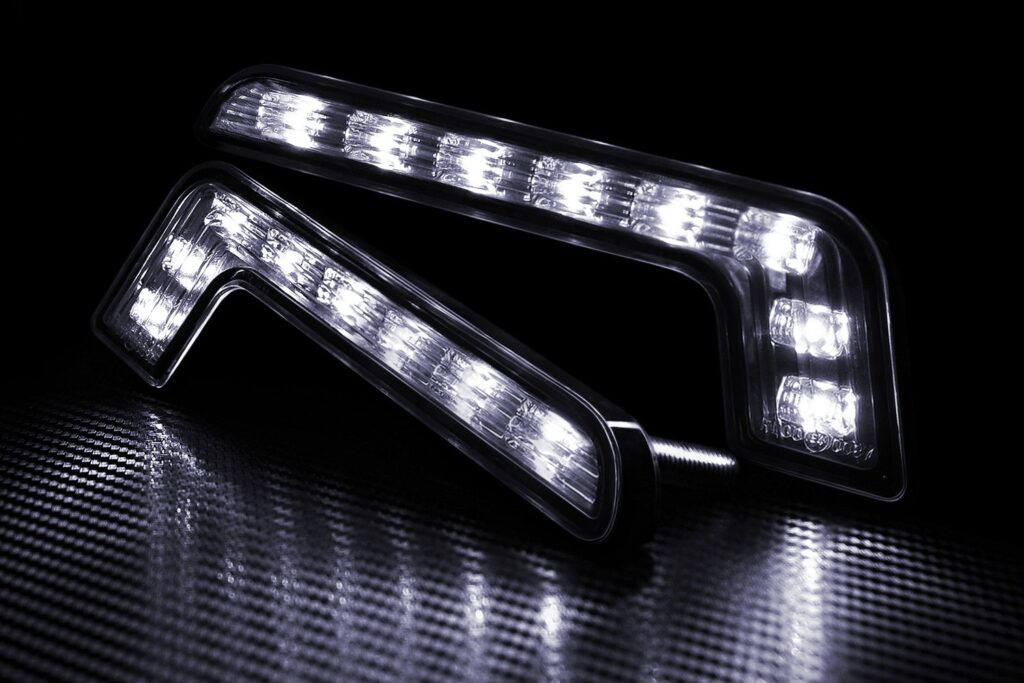
source: pinterest.com
Depending on your needs and preferences, you can choose from surface-mounted panels, recessed LED panels or suspended panels. The former are used especially where there’s no provision for false ceilings.
Surface-mounted panels
Such lights are made with the highest quality metal enclosure that helps LEDs to withstand corrosion due to moisture. What’s more, thanks to the enclosure, LED lights can withstand physical damage, too.
Recessed LED lights
When it comes to the LED recessed lights — those are designed for minimum energy consumption and maximum efficiency. They are made to be placed into the wall or ceiling. Importantly, “LED recessed lights” means no visible wiring or fixtures. They can create a brighter, cosier and more inviting atmosphere.
Suspended LED lights
Suspended panels, also known as suspended, false or drop ceilings, are not structural ceilings. We can describe them as secondary ceilings that are suspended from the structural slabs above. Installing suspended panels consists of creating a gap between the suspended ceiling’s topside and the structural ceiling’s underside.
LED bulb lights
There are a few types of LED bulbs: dimmable, decorative, vintage, filament, festoon, Edison, and RGB+CCT smart LED bulbs. When it comes to the shapes, there are twisted, bayonet, candle, golf, and globe ball bulbs.
Dimmable LED bulbs
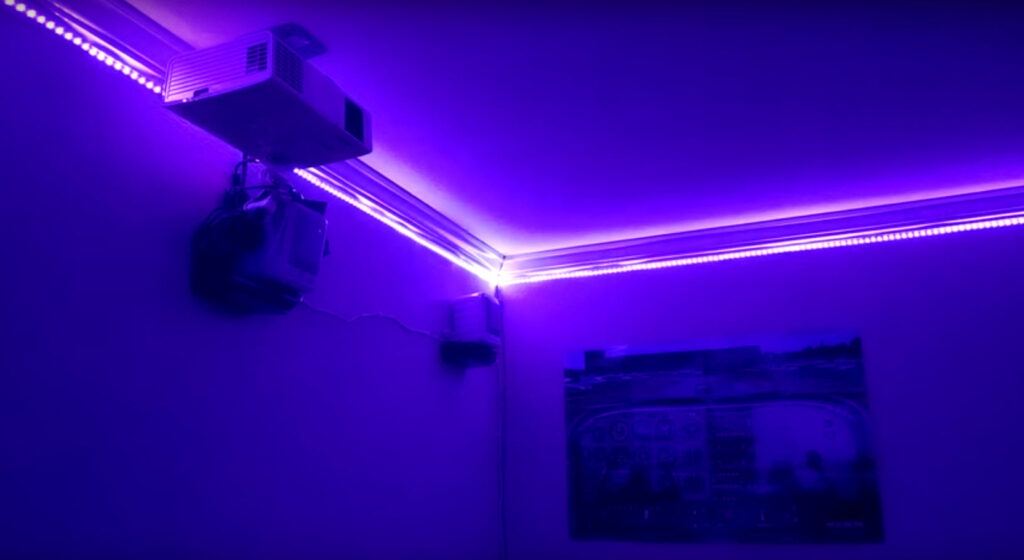
source: pinterest.com
Dimmable LED bulbs are perfect for illuminating living rooms and bathrooms. One of the biggest advantages of such lights is that you can dim them every time you want to set the mood ideal for a specific occasion.
Decorative LED bulbs
LED bulbs with decorative features – what does this mean in practice? This can mean, for example, small so-called LED party lights which can be used in practically all kinds of lights. Not only that, you can hang them up indoors as part of decorative pieces or as mood lights.
Vintage LED bulbs
Vintage bulb lights are classically looking filament LED bulbs, which look a bit like traditional incandescent light bulbs. Such lights are ideally suited to Victorian and steampunk decors. They can definitely add cosiness and charm to every interior.
Filament LED bulbs
You already know that LEDs generally do not need filaments to function, as they are based on light emitting diodes. However, filament LED bulbs have special elongated diodes that produce light. Those diodes look like filaments not without reason – they are created this way especially for fans of the classic, filament look. If you’re one of those people, you will love filament LED bulbs!
Festoon LED bulbs
Festoon lights look very much like string lights, however, they differ in size. String lights are definitely smaller. When it comes to the size of festoon – they utilise normal-sized bulbs. You can use festoon LED bulbs both indoors and outdoors (as long as their IP rating is IP44 and up). They would look amazing in your backyard! Imagine organising a garden party for your family and friends and using festoon LED bulbs for lighting and decoration. Such lights can create a unique atmosphere!
Edison LED bulbs
Edison LED bulbs are called this way because their appearance is based on the designs made by Thomas Edison. Some of those lights have tinted glass. Edison lights are great for any retro, industrial, and loft decors. They are practical and look great – what more could you want?
RGB+CCT smart LED bulbs
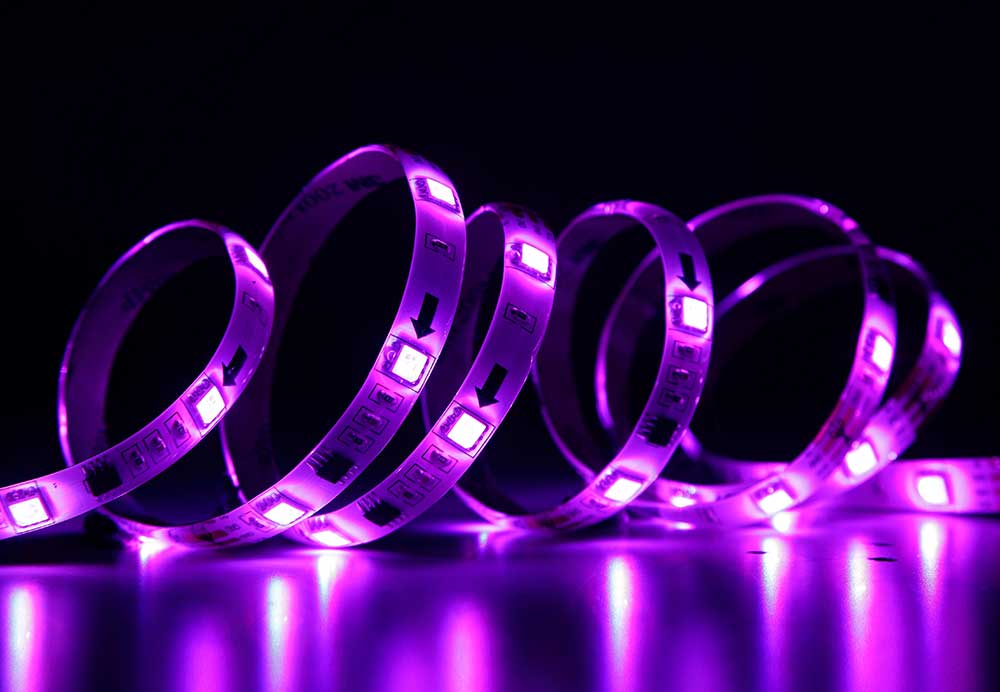
source: pinterest.com
We cannot fail to mention LED bulbs with adjustable light output and colours. Such colour-changing lights are great for setting up versatile lighting installations for bedrooms, living rooms, but also for businesses, such as clubs or restaurants. Smart lights can be controlled via a remote or a wall-mounted panel. There’s no need to be in the same room – you can control them remotely.
What are the advantages of LED lights?
As promised a few paragraphs earlier, we would like to consider the advantages and disadvantages of LED lights. There is a lot to write about, especially in the case of advantages. LEDs can bring you many benefits!
LED lights require less maintenance
If we compare a LED light with a traditional light bulb, you will see that the first one requires less maintenance, due to its reduced risk of burning out or shock. An LED light has a longer lifespan. For example, 12W LED light can last even up to 25,000 hours, so much longer than incandescent bulbs which usually can only last 1000 hours. In practice, it means that if you buy LEDs, you won’t have to buy new ones over and over again. Once you buy LED lights, you can enjoy them for several years without the need for replacement.
LEDs offer cost-effective lighting solutions
It can be said that buying LEDs is a good thing for your wallet too – you will save money in the long run. It should be emphasised that LEDs need a lower wattage in order to produce the same amount of brightness (that is measured in lumens). Thanks to that, LEDs’ users can get the exact same amount of brightness with less energy. By replacing traditional lighting with LED lighting fixtures, you clients can easily reduce their electricity bills.
LED lighting is energy-efficient
LEDs are known for their high energy efficiency and environmental friendliness. They are extremely energy-efficient, as they consume even 85% less power than non-LED solutions. No wonder they keep becoming the most frequently chosen lights for both professional and general users.
They can proudly be called environmentally friendly because they do not contain any toxic chemicals such as mercury. They are free of harmful gases. They simply produce as little harm to the environment as possible!
It’s worth mentioning that the International Dark Sky Association advises to cut the amount of light people project into the sky. That’s why we recommend using outdoor LED lights but with caution. Use them from time to time, rather occasionally, during garden parties with your closest ones.
LED lights allow greater control
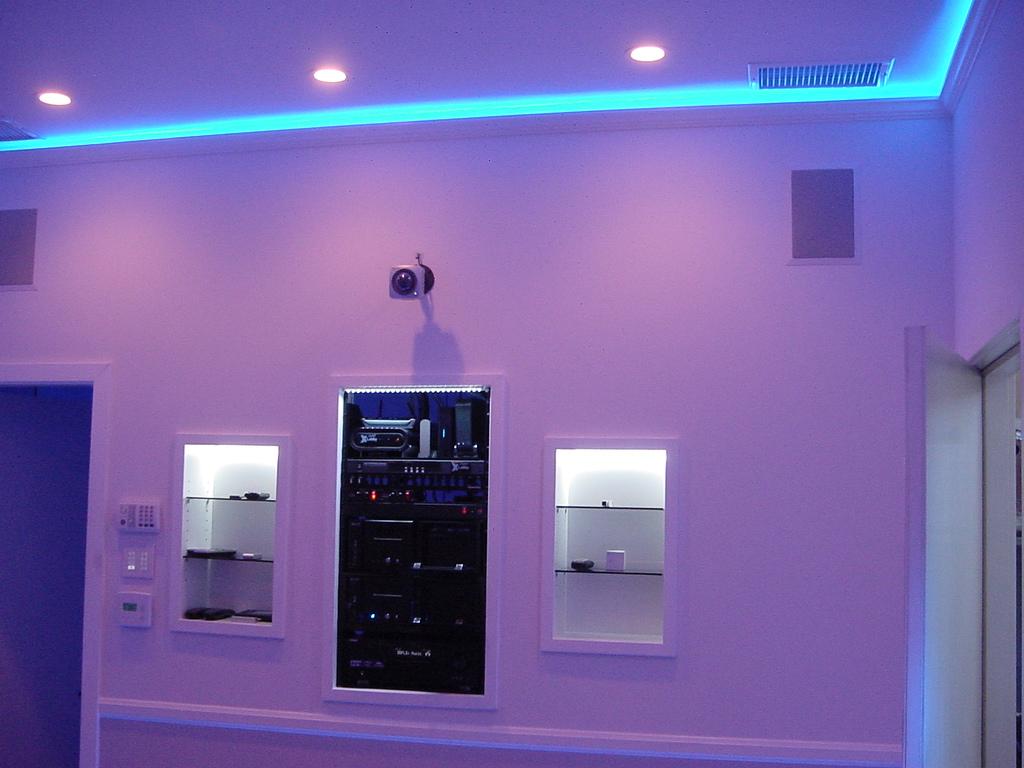
source: pinterest.com
Unlike most conventional lighting technologies, LEDs allow control over the light output. The user of such lights can adjust their brightness and light output. LED lights allow greater control of the ambience in your space. They are well-suited for ambient lighting – they use temperature, colour, and brightness in order to create an even and comfortable level of light throughout a space.
Staying in the topic of controlling, we would like to add that there are also smart LED lights which don’t require manual operation – they can be controlled through voice commands or remotely. LEDs allow us to control them via remote control, direct Bluetooth connection, a digital voice assistant, or special apps, which is a very convenient and modern solution. LEDs can change their warmth and colours thanks to that. You can dim some models remotely – what fun!
LED light bulbs are more robust
The next advantage of LED lights is that they are really robust and durable. They are made with epoxy, which in practice means that they can withstand vibrations, shock, and rough conditions. The solid non-filament design makes those lights shock resistant. Thanks to their robustness, they are suitable not only for indoor applications, but also for outdoor applications.
LED lighting provides many colour solutions
Traditional light sources offer mainly warm and white light. For comparison, LED lighting can offer us a diverse colour palette. Red, blue, green, amber, yellow, and white are commonly available colours of LED. Combining blue, green, and red in a single LED device can produce millions of colours.
LED lights also allow us to change the colour temperature in order to suit the mood of any space. They can give you a stimulating cool white early in the morning or a cosy and warm white when you want to relax in the evening. They “adapt” to your actual needs!
What are the disadvantages of LED lights? Are there any?
There are many reasons for choosing LED lights – you already know that. But do those lights have any disadvantages? Have you ever wondered about it? Maybe you have heard some common myths about LEDs which discouraged you from buying LED lights? Let’s find out about the cons of LED lights.
LED lights cause blue light pollution
The first big concern people have about LED lighting is blue light. You should know that blue light is what your eyes react to during the day. It gives your body a signal that you should “stay awake”. If your eyes are exposed to extremely high levels of blue light – they might be damaged and eye disease might occur.
However, if you’re an average user, blue light won’t hurt your eyes. It could, in fact, be problematic for those who have existing eye conditions. The truth is that LED lights use the same amount of blue light that computers, smartphones, and tablets use. Cool white lights emit proportionally more blue light than conventional outdoor light sources, so they cause more light pollution than light sources such as sodium lamps. But still, we wouldn’t call them dangerous for the eyes.
LED fixtures are voltage-sensitive
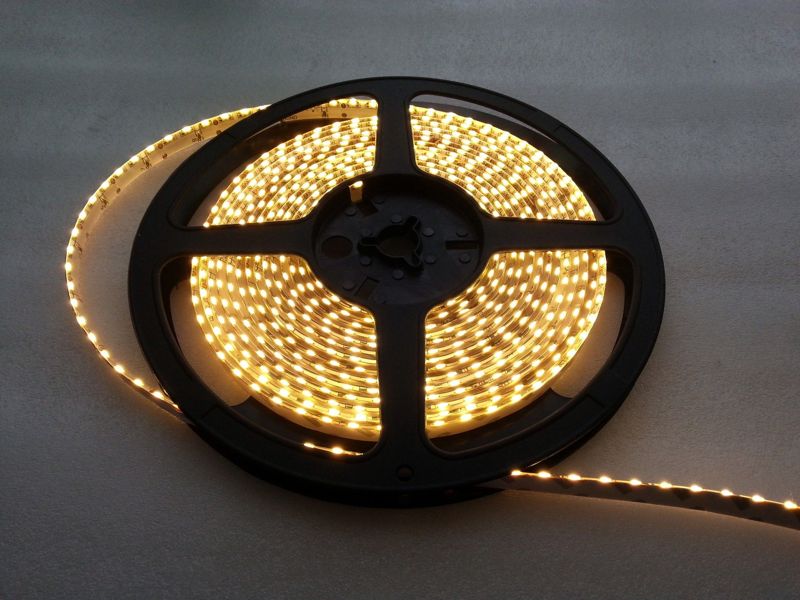
source: pinterest.com
LEDs are current-sensitive devices, but slight changes in current don’t affect LED lights as much as similarly slight changes in voltage affect filaments in bulbs. Designers of LED lights should always consider transient peak currents when they implement LED driver circuits.
The material the LED lights are constructed out of or the circuitry that is included in LED lights determines what input voltage is necessary in order to operate the lights. A good example is trying to use 12v LED light with more than 12v DC which isn’t a good idea, as it may make the light over-driven and even end up with burning out the diodes.
LED lights don’t allow spherical light distribution
Incandescent lights and fluorescent lamps allow spherical light distribution. Unfortunately, LED lights usually allow a limited degree of divergence. LEDs are not that easy to apply to uses that need a spherical light field. Even though LED lights cannot always provide divergence below a few degrees, they are still great lights, taking other aspects into account!
Summary
LED lighting is one of the best things that even happened to the lighting market. LED lights are not perfect, but… they are close to perfect. There are so many types of LEDs such as LED strip lights, LED light bulbs, LED ceiling lamps – there is something for everyone! They are energy-efficient, environmentally-friendly, robust, cost-effective, safe, and smart. Their longevity and light quality is impressive. They provide so many colour and temperature solutions! It’s impossible to find a better lighting solution!

